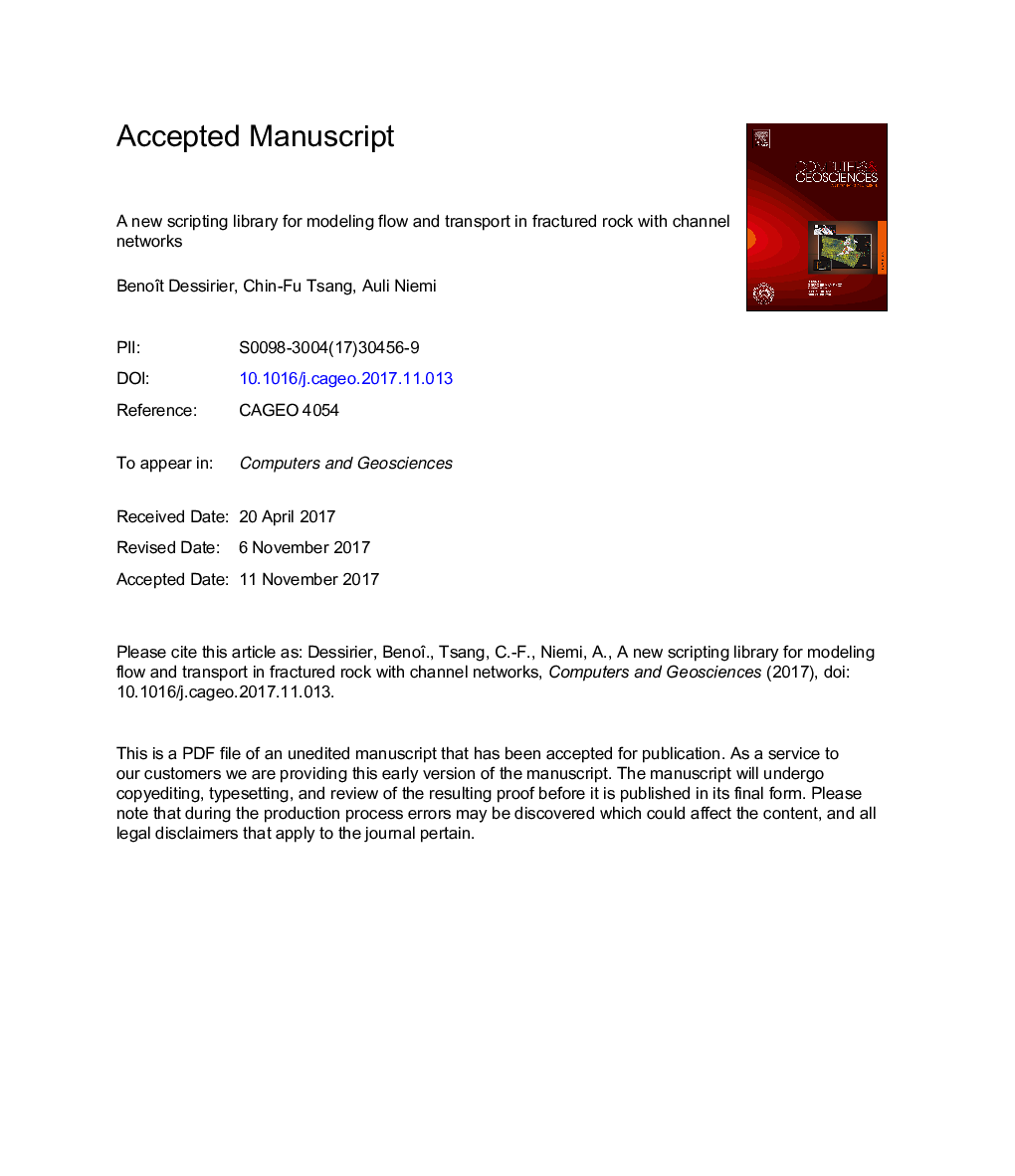| Article ID | Journal | Published Year | Pages | File Type |
|---|---|---|---|---|
| 6922234 | Computers & Geosciences | 2018 | 35 Pages |
Abstract
Deep crystalline bedrock formations are targeted to host spent nuclear fuel owing to their overall low permeability. They are however highly heterogeneous and only a few preferential paths pertaining to a small set of dominant rock fractures usually carry most of the flow or mass fluxes, a behavior known as channeling that needs to be accounted for in the performance assessment of repositories. Channel network models have been developed and used to investigate the effect of channeling. They are usually simpler than discrete fracture networks based on rock fracture mappings and rely on idealized full or sparsely populated lattices of channels. This study reexamines the fundamental parameter structure required to describe a channel network in terms of groundwater flow and solute transport, leading to an extended description suitable for unstructured arbitrary networks of channels. An implementation of this formalism in a Python scripting library is presented and released along with this article. A new algebraic multigrid preconditioner delivers a significant speedup in the flow solution step compared to previous channel network codes. 3D visualization is readily available for verification and interpretation of the results by exporting the results to an open and free dedicated software. The new code is applied to three example cases to verify its results on full uncorrelated lattices of channels, sparsely populated percolation lattices and to exemplify the use of unstructured networks to accommodate knowledge on local rock fractures.
Related Topics
Physical Sciences and Engineering
Computer Science
Computer Science Applications
Authors
Benoît Dessirier, Chin-Fu Tsang, Auli Niemi,
